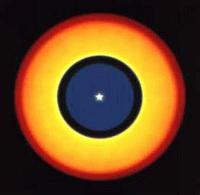Nataraja's children
- Mesma Belsaré

- Mar 29, 2019
- 3 min read
Updated: Apr 2, 2019

March 13th-23rd marked the 10th anniversary of Asia Week in New York. Away from the bustle of auctions, panels, gallery talks and openings in Manhattan, celebrations continued on the picturesque campus of William Paterson University (WPU) in New Jersey into the week of March 25th.
An invitation from the Asian Studies Program at WPU to present a session on symbolism in Indian art offered me a challenge: how does one explore the visual treasures of an entire civilization in 1.5 hours? How does one engage an audience in a non-didactic discourse? I decided on taking a learner-centered approach rather than making talking-head pronouncements. Loath to compromise on content in an educational session, I lean on the faith in the power of images, of symbols and of the innate human ability to recognize all that is derived from lived experience, even if the content is unfamiliar territory.
With an immensely rich and complex history spanning several millennia, India offers an overwhelming palette of visual options; its artistic heritage is often perplexing and challenging for the uninitiated. To study it in chronological progression would take years! Besides, individual response to art is typically colored by cultural conditioning and personal taste. However there is one image-in my experience as an educator-that arrests the eye and imagination of even a novice: that of the Dancing Shiva, also known as Natarāja. If one has studied any of the Indian classical dance or music traditions, one has known the image of Natarāja. He is then a familiar entity. But those who are new to the image, also receive it with remarkable intrigue.
I started by dance-narrating the story of the wandering Bhikshātana (mendicant) Shiva and his transformation into the King of Dance. Deconstructing the Natarāja image by creating a tableau with Paterson students was met with high excitement from the audience. It aided in their discovery of the meaning behind Natarāja's drum, the fire, Apasmara (the demon) and the significance of his panchakritya (five actions). We discussed how these five actions relate to today's world, the massive unrest, the displacement of millions from their homeland, and the regenerative power within each individual. But we didn't stop there. Where else does one find quantum physics disguised as an image of arresting beauty? So we delved into the connection between Natarāja and nuclear science.
To establish a link between the literal and the metaphorical is a delightful moment for an educator. An energy diagram of the cosmic mandala was then delineated to illustrate how and why it comes about, followed by a derivation of the human mandala. Making comparisons of the latter with Leonardo da Vinci’s famous Vitruvian Man demystified the stances of Indian dancing sculptures. I find it utterly fascinating that people through civilizations recognize recurring visual patterns around them, attempt to make meaning out of these patterns and code them in symbols.
I grew up in India in a traditional Marathi family. Hindu rituals of lighting the lamp in the evening, daily puja, decorating the yard with rangolī during festivals, making torans from fresh mango leaves, the annual Ganapati pūjā etc. were mini events of my childhood. There were rules even in the way the food on our plates was arranged; we were reprimanded if we failed to organize it in the proper alignment, which sometimes annoyed the immature, younger me. Over time my involved pursuits in dance and visual arts coupled with curiosity and the ever-hanging question “WHY?” revealed the profound symbolism of these designs, rituals and activities. Today, I enjoy sharing with an audience why a rangolī/alpanā pattern looks similar to an animal cell under an electron microscope; why we need to look at nature closely, only to realize that humans are but one piece of a cosmic jigsaw puzzle. We ARE Natarāja's pulsating dance! The glint of discovery in the eyes of my audience keeps me going.
-Mesma
Reviews:
William Paterson audience of students, faculty and I were completely mesmerized. You did an amazing job of making some of the central ideas of Hinduism as embodied in the figure of the dancing Shiva--Nataraja--easily accessible. More importantly, by showing the connections of the profound and cosmic to the everyday, you touched so many of us, as was evident from the comments and questions in the Q&A... It was an incredible learning experience for us all.
Director of the Asian Studies Program at WPU
Awesome event...I was caught by surprise and left inspired by the presentation. Great stuff!
Audience member



















Comments